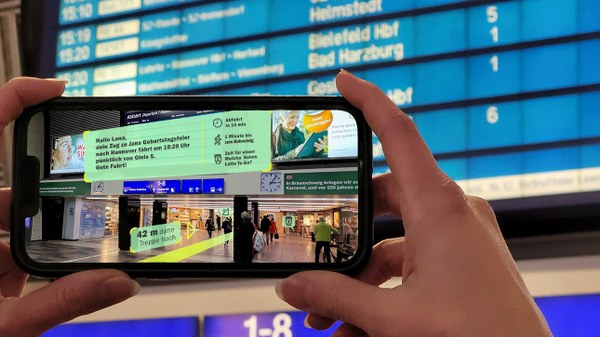STADT:up – Solutions and Technologies for Automated Driving in Town: an urban mobility project
In the STADT:up project, DLR is developing solutions for end-to-end automated driving in urban traffic. One focus is on complex inner-city traffic scenarios.
The STADT:up project is developing concepts and pilot applications for end-to-end automated driving in urban areas that are tailored to user needs. The focus is on the implementation of new, AI-based methods and their demonstration in automated driving systems, particularly in complex traffic situations. Special consideration is given to vulnerable road users, complex junctions and automated threading and manoeuvring around obstacles.
Solutions for complex, multimodal urban transport
STADT:up aims to develop integrated, scalable solutions for future urban mobility: automated vehicles must also be able to safely master complex inner-city traffic scenarios. The solutions are based on individual mobility cases and demonstrate networking for multimodal mobility. With a view to realistic perspectives of future urban mobility, suitable future concepts are developed and requirements are derived based on the needs of users.
Automated driving - from conception to evaluation
The project considers the entire chain of effects: perception, fusion, localisation, environment model, prediction, interaction and cooperation through to behaviour and manoeuvre planning. The objectives are the recognition of dynamic and static environments and the differentiation and handling of fuzziness in these two categories as well as highly available, robust and adaptive trajectory planning based on multimodal prediction of all road users. The project also takes a differentiated look at the interaction and communication concepts between users, vehicles and other road users during automated driving. The situation-dependent adaptivity of operating concepts as well as the situation- and experience-dependent change in user behaviour will be examined.
In addition, concepts and perspectives for future intermodal mobility are being developed, involving all stakeholders: Cities, users, research institutions and the automotive industry. Of central importance here is the question of how mixed traffic consisting of pedestrians, cyclists, private or shared vehicles and public transport will develop in the future. Possible influences such as a strengthening of regionality and the development of local city centres, the change in infrastructure or the changing mobility behaviour of users, e.g. due to working from home or a growing awareness of energy and resources, are considered.
DLR's focus: digital twin, interface development and research into interaction behaviour
The DLR-Institute of Transportation Systems is working along the entire introduction and implementation chain to bring automated driving to the road: The focus starts with the exchange of requirements and use cases between local authorities and technology companies and moves on to the design and development of a digital twin that maps user requirements and experiences and enables their evaluation. With the help of holistic HMI concepts, consistent interactions between users and surrounding road users are realised, and a display and interaction concept for the workplace of the technical supervisor (teleoperator) is developed and prototypically tested. Furthermore, the focus is on holistic research into human cooperative interaction behaviour - in simulation scenarios as well as in real road traffic.
Duration:
01/2023 to 12/2025
Project volume:
€ 62.8 million, of which € 2.66 million from the DLR Institute of Transportation Systems
This project is managed by the department:




